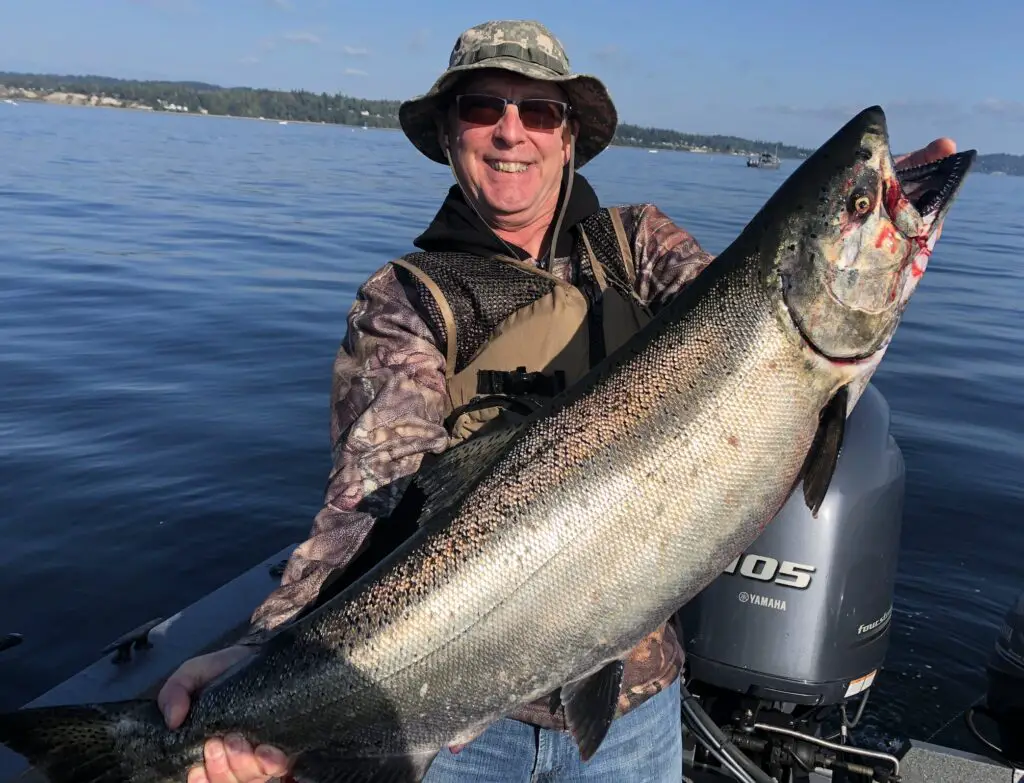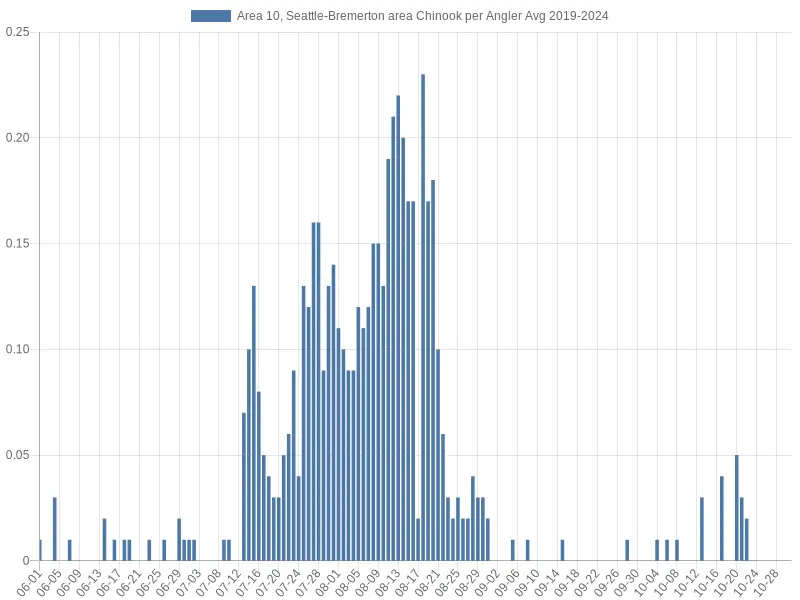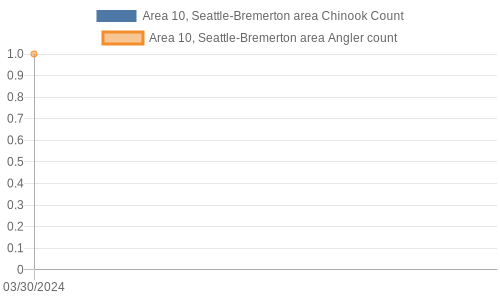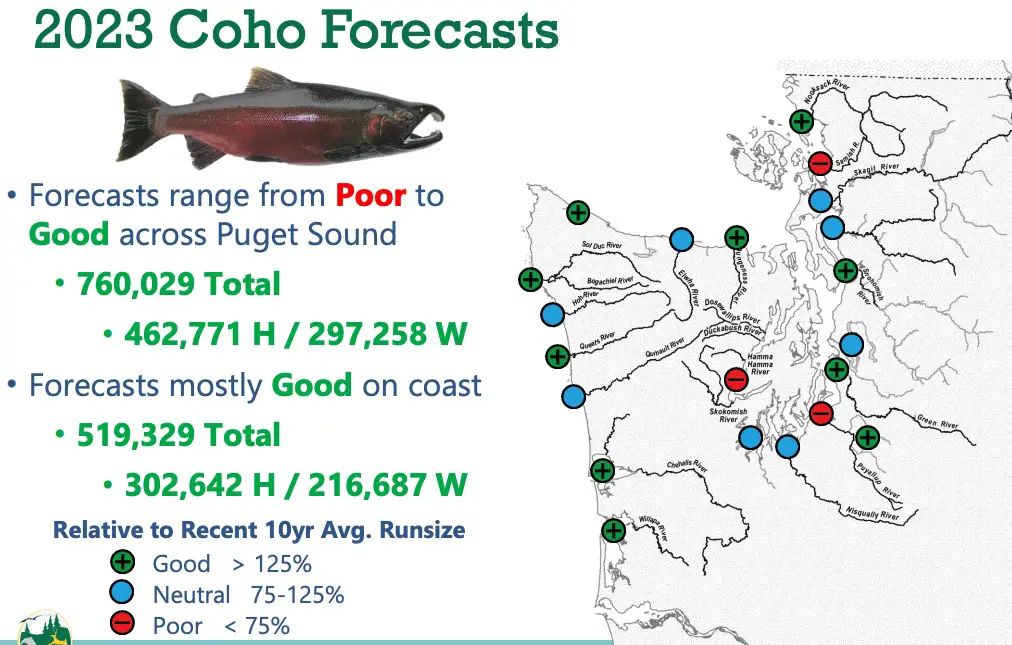
Sad news and a sad day for Puget Sound chinook anglers who now have all the interior middle Puget Sound marine areas closed for chinook harvest.
If you were paying attention you knew this was coming, but that doesn’t make the situation any better. In years past, the chinook seasons in Marine Area 7, 9, 10, and 11 would still be going strong, so it’s quite an unfortunate milestone to be in the first week of August in 2023 and basically only have Marine Area 13 open for chinook at this juncture.
There’s a lot of anger and frustration out there, but you know by now my approach here, is to try and get to the root of things, ask the important questions, and shed some light on where we are headed.
I’ve already covered a bunch about these early closures that are unfortunately tied to a combination of test fishing and having a sub-legal chinook encounter quota that makes it very easy to have things shut down.
I still need to get to the bottom of the sub-legal Chinook closure trigger and if there’s any room for change in this approach.
For those who were saying we don’t usually catch chinook in Marine Area 10 until August:

You can see the average peak chinook catch from the historical Creel report graph in marine area 10 is right in the middle of August, but late July usually produces a few good days as well.

So was our average catch from when it opened until it closed below previous years? Yes, but only by about 10%.
The catching experience in Marine Area 9 was about 35% better than the average of the previous 7 years, however.
So even though the catch rate in 10 is actually not that different than previous years, it’s a much bigger drop off of the catch rate than we typically see from 9 to 10.
One of the big questions out there has been why has the catch rate of legal adults in Marine Area 10 Chinook been so low compared to what we saw in 9.
There are a number of possible answers here:
- Mid-channel bank seemed to fish better than Point no Point / Possession, is that because the fish were metabolically more active up there or is there a big run of chinook headed back to Hood Canal?
- Is the run of chinook returning to Puget Sound this year below forecast? It’s created some great fishing in different areas that would seem to suggest that isn’t the case.
- Are the fish headed north to the Skagit or Skykomish? Neither were predicted to have a big run of fall chinook this season compared to what’s going on in the central or south sound.
- Are fish just getting full bellies before they reach Marine Area 10? Possible and the most likely scenario. There’s been so much bait availability, and we’ve seen this in previous years, when the fish come in full, the catch rate is generally pretty low. I will want to see catch rates in Marine Area 13 to confirm.
Also, were there really that many sub-legals around, or was it just a small sample size due to relying on test fishing numbers to estimate sub-legal encounters?
I think small sample size is definitely part of the problem when it’s applied to the entire sport fishing fleet, but I did encounter many sub-legals (some were jacks, which shouldn’t count, but they do) when fishing in 10, even on bigger gear.
Why is there an encounter quota on sub-legals? The simple answer is that we have numbers we agree to on “impacts” of both legally retained fish, and fish released, along with release mortality estimates. We make these agreements with co-managers (tribes) and submit them as part of our fisheries package to NOAA to allow us to conduct fisheries that impact ESA-listed chinook.
Sub-legals we end up killing impact future runs. Now…I don’t know how this math works in detail, and I suspect our encounter limits are too low for how it translates to the future years returning adult fish, but I need to actually get to the bottom of that.
So what’s the deal with losing the coho opportunity?

Again, coho have the same rules applied to them as chinook albeit without the ESA listed factor, so there’s not as much federal oversight, but there is still a management objective.
It has been a crazy incredible coho season throughout June and July, and we have caught a lot of fish.
But, there are stocks of concern in the mix being caught (consider the above map). Is that the reason limits were reduced or is it an issue of “share of fish harvested” between the state and the tribes? I have no idea.
There does appear to be this dynamic unique to Puget Sound management: If a run of fish is not good, it gets shutdown, but if a run of fish is too good, it also gets shutdown…Doesn’t the increased catch reflect greater abundance?
I have many more questions…If I was a central Puget Sound angler, I would probably head up to Marine Area 9 and fish possession for coho and pinks, crazy action going on right now!
In fact, I made a video here on it:
Official WDFW News Release below:
WDFW News Release: Chinook salmon retention closed in Marine Area 10 (Seattle/Bremerton Area) (CORRECTED)
Action: Closes retention of Chinook and changes coho daily limit to one (1). Clarifies chum retention rules and West Elliott Bay seasons.
Species affected: Chinook and coho salmon.
Effective dates, locations, and rules:
Marine Area 10, except Elliott Bay, and year-round piers (Bremerton Boardwalk, Illahee State Park Pier, Seacrest Pier, and Waterman Pier):
- Immediately through Sept. 30, 2023: Salmon daily limit two including no more than one coho. No minimum size. Release Chinook and chum.
- Oct. 1 through Oct. 31, 2023: Salmon daily limit two including no more than one coho. No minimum size. Release Chinook.
Elliott Bay, waters of Elliott Bay east of a line drawn from West Point to Alki Point, up to the mouth of the Duwamish River, and including Harbor Island:
- Aug. 18 through Sept. 30, 2023: Salmon daily limit two including no more than one coho. No minimum size. Release Chinook and chum.
- Oct. 1 through Oct. 31, 2023: Salmon daily limit two including no more than one coho. No minimum size. Release Chinook.
Reason for action: The current estimate of Chinook sublegal encounters for the summer fishery is 9,471 of 7,748 total sublegal encounters (122%) agreed to in this year’s List of Agreed Fisheries (LOAF). Therefore, WDFW will close the fishery to Chinook retention.
Additionally, the current estimate of coho catch for the month of July is 11,665 coho. The preseason expected catch of coho in the month of July was 4,810 coho, almost 250% above the expected catch. The retention limit for coho is being reduced to minimize impacts on coho stocks of concern.
Additional information: The East Elliott Bay Chinook retention fishery from Aug. 4 to 12:00 p.m. Aug. 7, remains open as listed in the 2023/24 Washington Sport Fishing Rules pamphlet.
Year-round piers (Bremerton Boardwalk, Illahee State Park Pier, Seacrest Pier, and Waterman Pier) also remain open as listed in the sport fishing rules pamphlet.
Why is there still a commercial season in area 12 around lillywop
Then that’s went in this morning Sunday I couldn’t at least let the commercials wait until Monday or at least till the weekend warriors had a chance to fish
I don’t know much about the commercial seasons in 12…
It’s a bummer that shore bound anglers or human powered boats are not considered for area 10, 11, 13,Elliot and Commencement Bay. Public Fishing Piers are great and adding the restrictions of “No Motors” would provide more opportunities by getting back to basics and traditional fishing. As it is, the outdoors in Washington are no longer “Inclusive”.
Great point Bill. In general, money and political clout determines fishing opportunity. It generally goes like this: Commercial non-tribal -> commercial tribal -> marine anglers -> river anglers.
When will Wa state going to give us our money back. We sports fishing people but a license and punch card with the intent to be able to fish the whole season. But after we pay full price , Our season gets closed down just when the run starts.
I’m done wasting my money on fishing in this state. It’s cheaper to fish in Canada.
I mean, you’re not wrong. The difference between expected opportunity and real opportunity is significant and not for reasons that make sense to the general public. Especially when you can target the same fish in BC